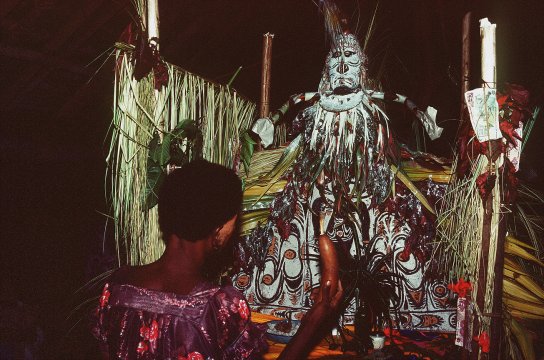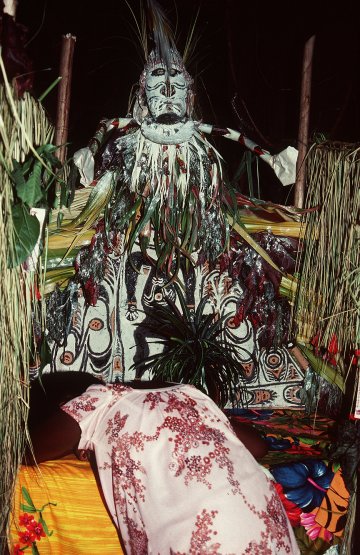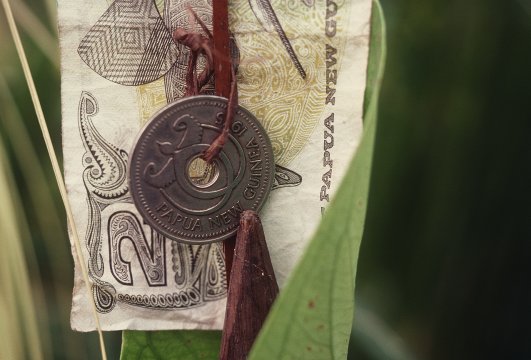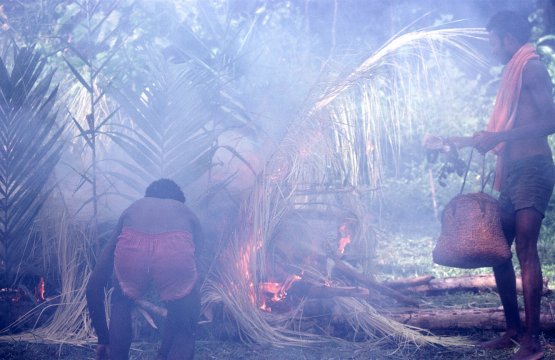|
John Tyman's Cultures in Context Series Torembi and the Sepik A Study of Village Life in New Guinea |
|
Topic No. 21: Farewelling the Dead ~ Photos 423 - 432 |
|
John Tyman's Cultures in Context Series Torembi and the Sepik A Study of Village Life in New Guinea |
|
Topic No. 21: Farewelling the Dead ~ Photos 423 - 432 |
 |
| 426. An appropriate effigy will have been prepared the day before and set up in a screened-off area in the centre of the house. |
 |
| 427. The mourners bow before this, some bringing gifts, and weep loudly as an expression of grief, begging the ancestral spirits to comfort them. |
 |
| 429. Gifts of money were also displayed beside the pyre for a while, but they were removed later. |
 |
| 431. As the fire took hold the deceasedís personal possessions were either consigned to the flames or, if they were of value, merely waved in front of the fire. |
![]()

![]()
Back to
Cultures in Context Intro: Photos & Recordings
![]()
Text, photos and recordings
by John Tyman
Intended for Educational Use
Only.
Copyright Pitt Rivers Museum,
Oxford University, 2010.
Contact Dr.
John Tyman for more information regarding licensing.
![]()
Photo processing, Web page layout,
formatting, and complementary research by
William Hillman ~ Brandon, Manitoba
~ Canada
www.hillmanweb.com